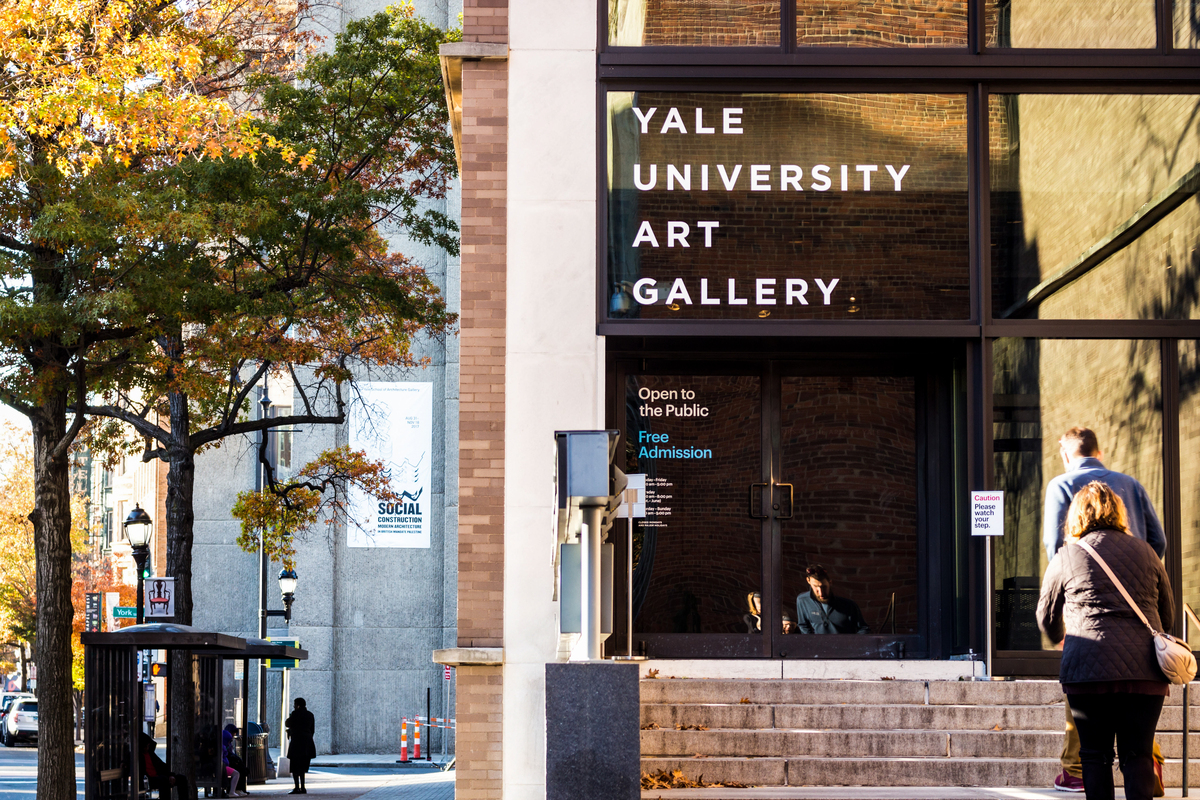Yale University Art Gallery digitizes its publications
Yale University Art Gallery digitizes its publications The Online Access project, part of the art gallery’s long-term digitization plan, is working to make art and ideas open to all.

Daniel Zhao, Seinor Photographer
A digitization effort of more than 50 years of the Yale University Art Gallery’s scholarly publications is gradually nearing completion.
The Online Access project was conceived during the start of the pandemic in an effort to increase the accessibility of the art gallery’s publications even while its doors were closed. This has involved two years of electronically uploading each of the gallery’s prior exhibit catalogs and accompanying them with alt text to ensure an immersive experience for all its potential users.
“The goal of the Online Access project is to make our catalogs available to a wider audience — not just here in New Haven, but across the country and around the world,” Tiffany Sprague ’97, director of publications and editorial services for the YUAG, wrote in an email to the News. “While the pandemic limited access to museums and libraries during the height of COVID-19, there are students and researchers who cannot easily access such establishments, regardless of COVID.”
Substantial work has been dedicated to make sure that the project embraces accessibility in all its meanings. Digitization not only entails bringing the gallery’s out-of-print publications onto the web, but also keeping an eye on how to accommodate disabilities. All uploaded PDF scans of the gallery’s catalogs are ADA-compliant, Sprague explained.
ADA-compliant digital materials must meet the four basic principles of perceivability, understandability, operability and robustness. Among many others, its guidelines require that web content must include a contrast ratio of at least 3:1 for large-scale text or images, individual word spacing of at least 0.16 times its font size and text resizability of up to 200 percent without loss of content or functionality.
However, exhibit catalogs — most of which place as much emphasis on the visual artworks as their written labels — presented another layer of challenges. In this case, alt text — descriptions of images read aloud by the computer’s optical-character recognition software — is crucial for visually-impaired viewers to appreciate the work.
One of the greatest difficulties in the project has been developing alt text that can adequately capture the complexity of the art, Sprague explained. After the contracted alt text vendor provided artwork descriptions that were “inconsistent, contained grammatical errors, and … overly brief,” the gallery had to rewrite them.
“It was important to us to ensure that all of our readers could access our content — not just the text but the imagery as well, which obviously is imperative when reading an art book,” Sprague wrote.
Developing a style guide for the student workers, staff and freelancers contributing to the project involved just as much trial and error. Sprague admitted that doing justice to artwork in clear and concise terms was harder than imagined. Even works as minimalist as the spare, rectilinear Mondrian paintings, for instance, often resist the easy clarity of simple descriptions.
Beyond ensuring that alt text quality was up to par, the project’s earliest phases also confronted legal hurdles. In the case of most gallery catalogs, the copyright license for printed artwork is granted only for use in the physical publication — rights which no longer apply the moment it gets scanned onto the Internet.
“When you upload [a catalog] online, it’s suddenly in the public domain, and your original copyright clearance doesn’t cover that,” said Laurence Kanter, chief curator at the gallery. “So although we may own rights to the publication, we don’t own rights to all of the images or content within that publication.”
Despite the obstacles, the Online Access project has made significant progress. Stephanie Wiles, gallery art director, explained in an email to the News that 67 books are currently accessible on the gallery’s website. Sprague added that she expected the project to near completion later this year.
Among the currently digitized publications, visitors can find everything from catalogs of Yale’s ancient bronze collections to Alfred Stieglitz’s 1999 nature photography exhibit at the University. According to Sprague, some of the highlights include the catalog for Matthew Barney’s “Redoubt” exhibition in 2019, which quickly went out of print, and a 2010 volume from the student-curated exhibition program, “Embodied: Black Identities in American Art from the Yale University Art Gallery.”
The gallery expects the project to be a springboard for new initiatives. Kanter and Wiles noted that digitizing their catalogs is only a first step towards experimenting with an electronic publishing program. A system of this kind, Kanter explained, means that scholarship would “appear first online”— and therefore be available to all students and researchers — before coming into physical print.
“We hope that starting in 2025, [online publishing] may become the norm for all of our subsequent publications, other than perhaps exhibition catalogs, which are not practical to release that way,” Kanter said.
Wiles added that the first such digital publication, a catalog featuring the gallery’s Italian paintings collection, will come as early as this summer. The gallery also has plans to release a new “mobile friendly” website to accommodate its growing number of digital resources.
Sprague ultimately hopes that the project’s impact will extend beyond just scholarly purposes. She recognized that inspiring the casual museumgoer to peruse the collections from the comfort of their home can go a long way.
“We’re looking forward to our legacy as … donors of information to this large pool,” Kanter said. “We just want to make sure … that we put everything we can out there for free access.”
The Yale University Art Gallery is the oldest college art museum in the United States.







